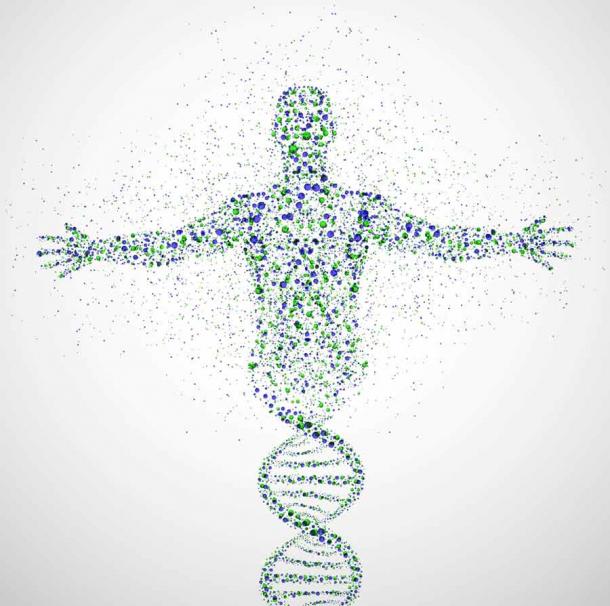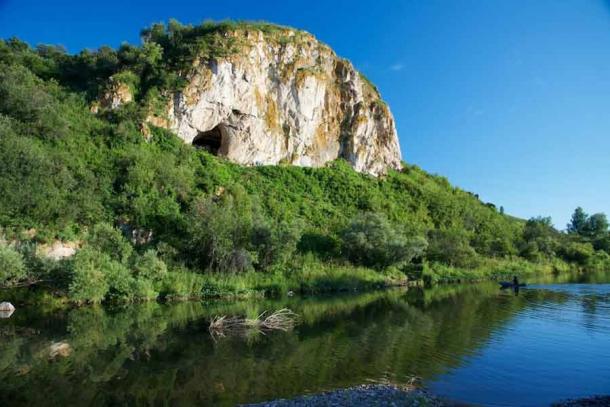Utilizing a new technique that allows for more precise analysis of ancient DNA, scientists have achieved a revolutionary breakthrough in the field of paleogenetics. For the first time, they’ve been able to retrieve intact and identifiable samples of Neanderthal nuclear DNA from deeply-buried sediment , which was removed from caves in northern Spain and Siberia.
This remarkable achievement emerged from the work of a team of evolutionary geneticists led by Benjamin Vernot and Matthias Meyer from the Max Planck Institute for Evolutionary Anthropology ( MPI-EVA).
Previously, it had only been possible to extract such material from fossilized teeth and bones. Only 18 Neanderthal nuclear DNA samples have ever been recovered in this way, which is why this new breakthrough in DNA-extraction-and-analysis methodologies is so significant.
“Now, it seems that it is possible to extract nuclear DNA from dirt, and we have a lot of dirt in archaeological sites,” said archaeologist Marie Soressi of Leiden University, in response to the disclosure of these results in the April 15, 2021 edition of Science.

Until now Neanderthal DNA was always collected from mitochondrial DNA, which is less than complete, but now it is possible to analyze nuclear DNA even if it is in cave dirt. ( Elymas / Adobe Stock)
In the past, sediment sampling in caves where Neanderthals or other ancient hominin species lived had only produced identifiable samples of mitochondrial DNA, which is shorter and hardier than nuclear DNA but only contains partial segments of genetic markers (all of which are inherited through the maternal line).
With the new sampling techniques, however, a special genetic probe can distinguish hominin DNA from intermingled plant and animal DNA, and it can also distinguish nuclear DNA from much more plentiful mitochondrial DNA.
Nuclear DNA contains a full menu of genetic material, which gives geneticists a richer database of material than mitochondrial DNA could ever provide. Expanded nuclear DNA analysis will allow scientists to confirm genetic links between groups of Neanderthals that occupied different regions of Eurasia at different times. From this information they will be able to reconstruct the movements of such peoples, filling in gaps about Neanderthal lifestyles and migratory patterns and drawing more clear distinctions between the activities of various Neanderthal subpopulations.
“By piecing together what we’ve got from fossils with what we can now get out of sediments, we can start to pull together much more of human history going back through time,” declared Bert Roberts , a University of Wollongong (Australia) geneticists who helped collect the DNA used in the study.

Chagyrskaya cave in the Altai mountains of Siberia was home to Neanderthals for tens of thousands of years and the current study also drew on Neanderthal DNA from this cave. (Dr. Bence Viola, Department Of Anthropology / University Of Toronto )
Unlocking the Secrets of Neanderthal DNA and Human Evolution
From unearthed sediment that was approximately 113,000 years old, taken from a cave near Atapuerca, Spain called Galería de las Estatuas, scientists retrieved a single nuclear Neanderthal DNA sample that was sourced to a male of that species. From a layer above it, which formed the cave’s ground floor approximately 100,000 ago, they found two additional nuclear DNA samples that belonged to two female Neanderthals.
The scientists also recovered nuclear DNA from the two Siberian caves , the Denisova and Chagyrskaya, which also housed Neanderthal populations in the distant past. The Neanderthal residents of Denisova lived there approximately 120,000 years ago, while the occupants of Chagyrskaya were alive much more recently, approximately 62,000 to 72,000 years ago.
Interestingly, a closer analysis of the genetic material taken from two levels at Galería de las Estatuas revealed that it belonged to two separate Neanderthal subspecies . These nuclear DNA samples were intermixed with an abundance of preserved Neanderthal tools, fossilized food scraps, and mitochondrial DNA, making it clear there were large groups of people living inside these caves during the two time periods in question.
Notably, mitochondrial DNA retrieved from Galería de las Estatuas confirmed a serious decline in genetic diversity. At least three separate lineages or subgroups had resided in the cave in the earlier period, but that was down to a single subspecies just 13,000 years later. The subgroup to which the male belonged was genetically related to the group that occupied Denisova in Siberia 120,000 years ago, while the two females belonged to the “classic” type of Neanderthal subspecies that lived in Chagyrskaya just 60,000 years ago.
According to the scientists involved in this new study, climate change likely explains why genetic diversity declined, and why one group of Neanderthals eventually replaced the previous inhabitants of Galería de las Estatuas.

Climate change over 100,000 years ago likely explains why genetic diversity declined, and why one group of Neanderthals eventually replaced the previous inhabitants of Galería de las Estatuas. Just like climate change today is changing species diversity in so many ways. ( Paul Souders/Danita Delimont / Adobe Stock)
Study co-author Juan Luis Arsuaga, a paleoanthropologist from Complutense University in Madrid, links the cave’s complex history to Ice Age cycles and the movement of the glaciers across the Eurasian landmass.
Arsuaga believes that multiple Neanderthal subtypes thrived during a warm, humid interglacial period that Eurasia experienced starting approximately 130,000 years ago. However, when Eurasia’s glacial cover returned 20,000 years later, the subsequent plunge in temperatures had a devastating impact on most Neanderthal groups. The “classic” type of Neanderthal, which had a somewhat larger brain than its forerunners, was the only subgroup that managed to survive the dramatic change in climate.
Whenever periods of warming were subsequently experienced, the descendants of the surviving Neanderthals would become more mobile, spreading out to repopulate regions that had been too frigid to occupy before. What happened in the area around Galería de las Estatuas between 113,000 and 100,000 years ago was the equivalent of an extinction-level event, which explains why the cave was completely abandoned when the “classic” version of the Neanderthal species arrived in the region.
This theory is consistent with what is known about how human populations responded to climate changes in the past.
“This [Ice Age-related] pattern—dispersal over perhaps long distances and population replacement or admixture—is one that we find almost everywhere we look,” commented Beth Shapiro, a molecular biologist from the University of California—Santa Cruz who is familiar with the results of the MPI-EVA-led project.

A much better genetic map will likely be produced from this breakthrough in nuclear DNA analysis. ( immimagery / Adobe Stock)
Is a Complete Prehistoric Human Genetic Map Within Reach?
The revelations emerging from the recovery of nuclear DNA from the three caves, in Spain and Siberia, are only the beginning. In the months ahead the MPI-EVA team will be analyzing sediments obtained from dozens of caves and other sites all over the world, searching for nuclear DNA samples from Neanderthals, Homo sapiens, and any other specimens of hominin that may have walked the earth in prehistoric times.
Through the application of newly developed genetic-detection-and-analysis techniques, which will likely experience further refinement as their use increases, evolutionary geneticists, paleoanthropologists, and archaeologists may eventually be able to create a comprehensive, four-dimensional map that reveals the complete geographical, chronological, migratory, and evolutionary history of each hominin species. This would represent a monumental achievement, and for the first time ever it may be a realistic goal.
Top image: Now that nuclear Neanderthal DNA can be “harvested” from dirt, we are on the cusp of a paleogenetic breakthrough that could eventually yield a perfect genetic map of ancient hominins. Source: Elena / Adobe Stock
By Nathan Falde
Related posts:
Views: 0
 RSS Feed
RSS Feed

















 April 20th, 2021
April 20th, 2021  Awake Goy
Awake Goy  Posted in
Posted in  Tags:
Tags: 
















